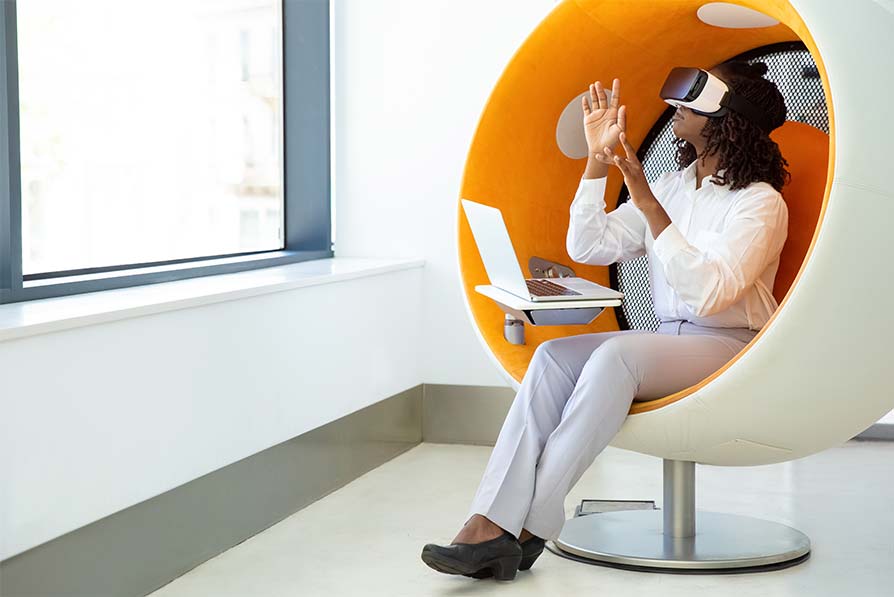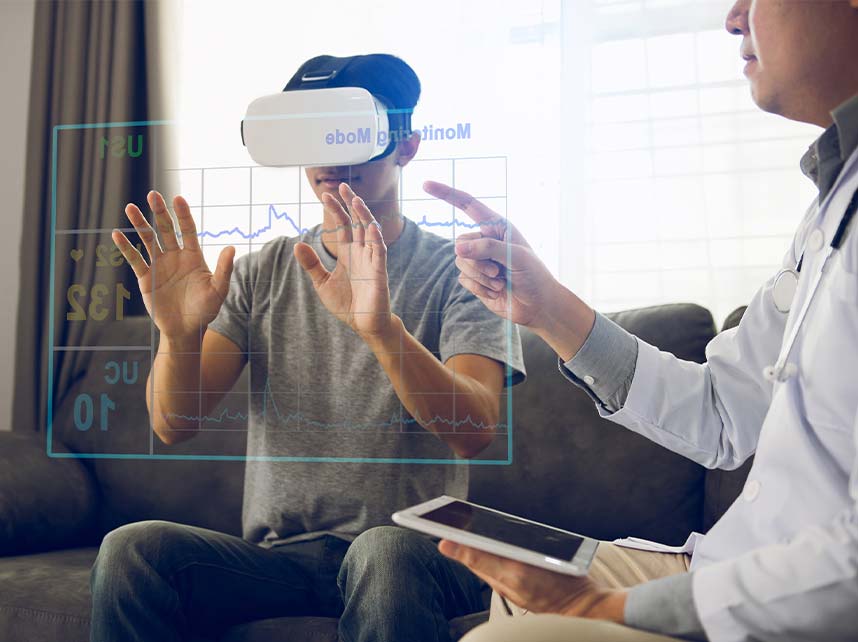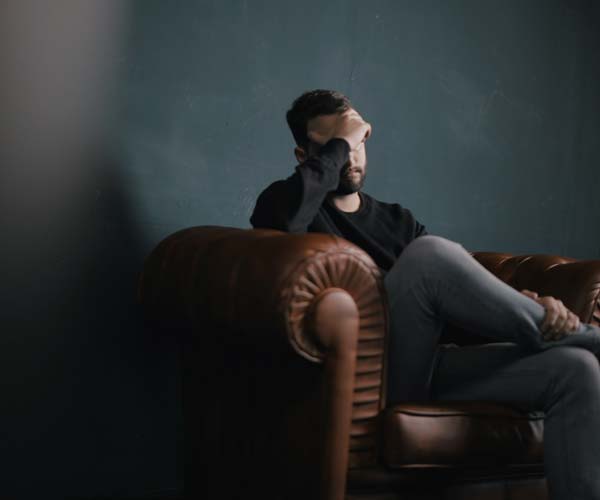Virtual Reality Therapy
Go beyond traditional therapy into virtual reality
What is Virtual Reality Therapy?
Virtual Reality (VR) Therapy is an innovative approach to psychotherapy using advancements in technology. You will mentally enter a scenario that simulates your feared situation. The 3-D graphics will make you feel as if you are really there, and your body will respond accordingly. Decades of research on easing anxiety, overcoming phobias, and promoting relaxation are applied to the process of working through the virtual environments. With my guidance and monitoring, you can achieve your therapeutic goals by applying the skills gained in the virtual environments to the real-life situations that you face.


Why Does VR Therapy Work?
VR Therapy offers immersive experiences that go beyond traditional cognitive behavioral therapy. For example, exposure therapy for phobias or anxiety will typically include gradually advancing from one level of the feared situation to the next until mastery is achieved. For some situations, however, the therapy cannot provide exposure experiences that are realistic enough to generate the necessary responses. Although helpful, this approach may not be enough.
By using VR, we can optimize your therapy experience by giving you access to feared situations that would otherwise be very difficult to simulate, such as flying on an airplane or speaking to a crowd. Working collaboratively, we can alter the virtual environments to include the elements spike your fear. As a result, you will generate the responses necessary to work through the anxiety these situations provoke.
In the attention and mindfulness environments, you will learn how to relax both mentally and physically. You will build an intentional practice of stepping away from endless demands of real life to an alternative reality where you can swim in the ocean, walk through a peaceful meadow, or scan your body to release tension.
Test Anxiety
Test anxiety can prevent even the brightest students from adequately demonstrating their knowledge. Feelings of pressure from the testing situation activate your anxiety and interfere with your concentration and memory recall. Maybe you’ve had to retake standardized tests several times, but you still feel disappointed with your scores.
Virtual reality therapy provides you with gradual exposure to the anxiety-provoking elements of the testing situation. You will learn to work through your anxiety in the virtual setting, which will make you calmer for your next real test. Test anxiety virtual environments are available for middle school, high school, and college students.

Fear of Public Speaking
Difficulty addressing a group of people can impair your academic performance, career advancement, and social networking. You might struggle to deliver a speech in front of a large group, or maybe it’s harder sharing your ideas around a conference table. Virtual reality therapy offers opportunities to develop confidence in many different public speaking scenarios.
The virtual environments include:
- Making a speech in an auditorium.
- Giving a presentation around a conference table.
- Sitting for an interview.
- Addressing a room while video cameras are recording.
These environments can be modified from generally relaxed to more intimidating with several potential variations. You could have audience questions, applause, or other distractions to simulate real life experiences. Virtual reality therapy offers you public speaking practice experiences that could not be generated so easily in real life. Confidence develops quickly with repetitive practice.

Fear of Medical Procedures
Some medical procedures provide information valuable to the detection and prevention of disease, and others are used for necessary treatments of potentially devastating medical conditions. It is not uncommon to experience temporary and manageable anxiety during various medical interventions, but you could face life-threatening consequences by avoiding necessary procedures.
Virtual reality therapy offers opportunities to develop increased comfort with medical personnel, settings, and interventions. For example, one virtual environment begins in a waiting room and proceeds through the steps of drawing blood to address fears of both needles and blood. Another virtual environment features an MRI scan (and also targets claustrophobia).

Fear of Driving
You could be terrified of getting behind the wheel and might even avoid driving all together. Your fear may have developed as a trauma reaction following an accident or could be the result of worry. A fear of driving could limit your professional, social, and educational opportunities and contributes to isolation.
Two virtual reality environments are available:
- Highway driving, which includes three lanes, curves, tunnels, and bridges.
- City driving with traffic jams and traffic signals to navigate.
Virtual reality therapy allows you to develop confidence driving with practice across increasingly challenging environments, options that would not be easily achieved in traditional psychotherapy.

Generalized Anxiety & Worry
Human minds can quickly and easily get caught up in worry, and being stuck in worry takes you away from the present moment and sends signals of anxiety throughout your body. You may have triggers that instantly generate worry about specific bad things happening.
There are several virtual reality environments to simulate common real-life triggering scenarios, including the following:
- Learning about potential harm to your baby, child, or other family members.
- Being confronted with a problem at work.
- Concerns about being sick.
Through virtual reality therapy, you will learn to reduce the anxiety associated with these areas of worry. Instead of getting stuck in your mind and spreading stress throughout your body, you will work toward a relaxation response during these triggering situations.

Stree Relief & Relaxation
Life can be stressful and hectic, and you could be so caught up in the craziness that you forget to breathe. The chronic stress takes an emotional and physical toll on your body, and the persistent activation of your stress response makes relaxation seem impossible. You need to train your body to relax, and two of the best methods are calm breathing and muscle relaxation.
Virtual environments for relaxation:
- Walking through a peaceful meadow.
- Underwater in the ocean as fish swim by you.
- Exploring a peaceful island.
- Body scan to develop awareness of tension.
- Progressive muscle relaxation.

Attention & Focus
So many of us feel disengaged from the here-and-now. Your mind jumps from one distraction to the next, and you struggle to focus on anything for long.
Virtual reality therapy introduces you to virtual environments where you can practice mindfulness:
- Transition from spring to summer.
- Walk through a meadow.
- Complete a mental scan of your body.
Children develop mindfulness and attention with virtual reality therapy in an environment featuring guided activities during transitions through the four seasons.

Additional Phobias & Anxiety
Your temperament and life experiences might have produced phobias and other specific sources of anxiety or fear.
In virtual reality therapy, you can face many different fears:
- Dogs, cats, and bugs.
- Heights.
- The dark.
- Being in unfamiliar places.
- Elevators and small rooms to treat claustrophobia.
- A dirty public restroom if you’re germophobic.

Sports Performance
We all know that being an athlete is physically demanding, but the mental components of sports are just as important to strong performance. As an athlete, you need to be focused, confident, and in control of your body and emotions. You need to overcome internal barriers and envision your success.
Virtual reality therapy promotes strong sports performance by improving your attention, developing relaxation strategies, and strengthening your body awareness. The virtual environments offer opportunities to increase tolerance of discomfort, regulate emotions, and promote muscle relaxation and recovery.

How Much Does VR Therapy Cost?
After the initial appointment, you can opt to participate in one of the three VT therapy programs currently offered.
8 Sessions
$1,600
10 Sessions
$1,800
12 Sessions
$2,000
How Do I Get Scheduled?
To schedule your initial appointment, you can visit teletherapygroup.com or call 269-366-0650. Additional sessions will be scheduled after the initial appointment.



Social Anxiety